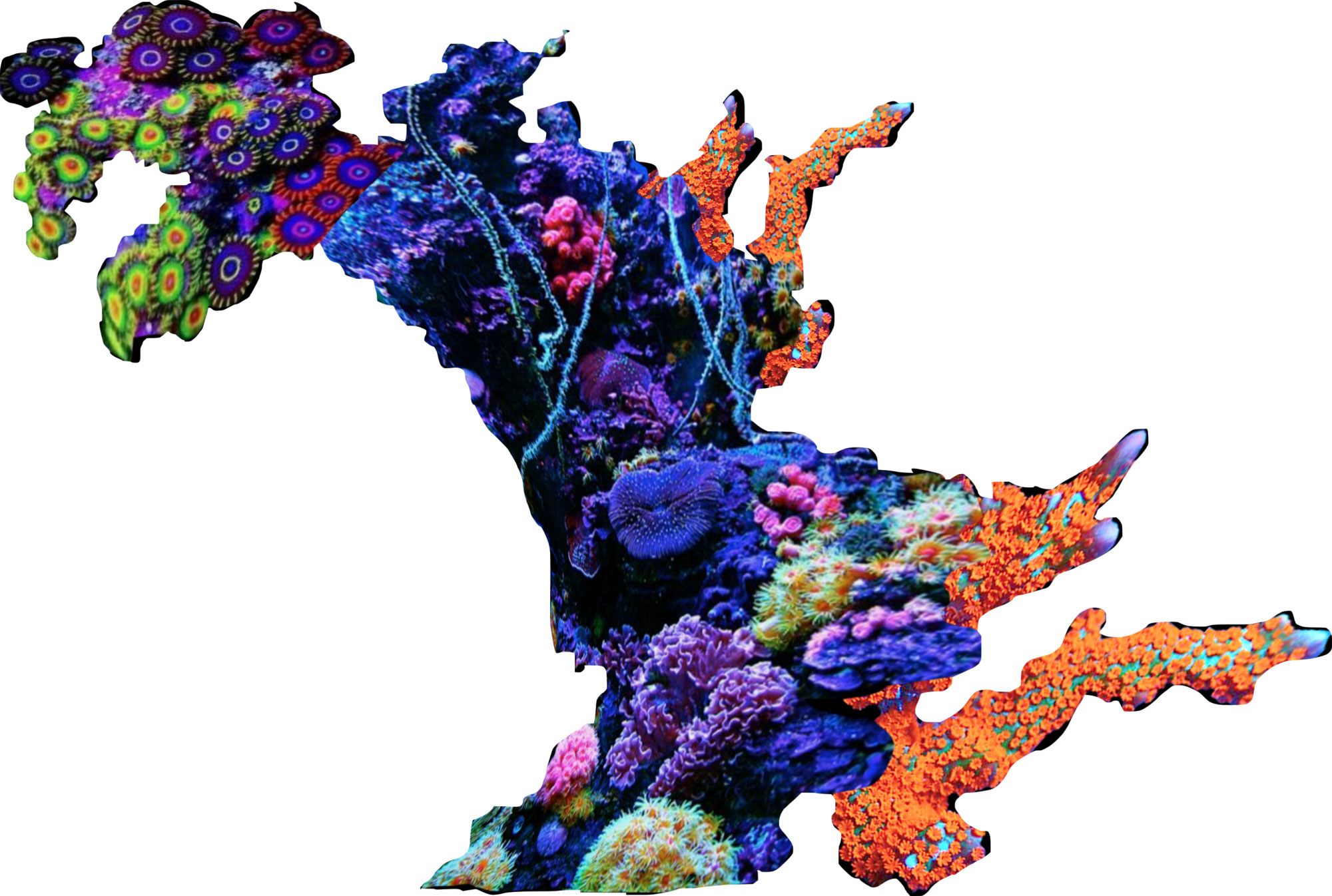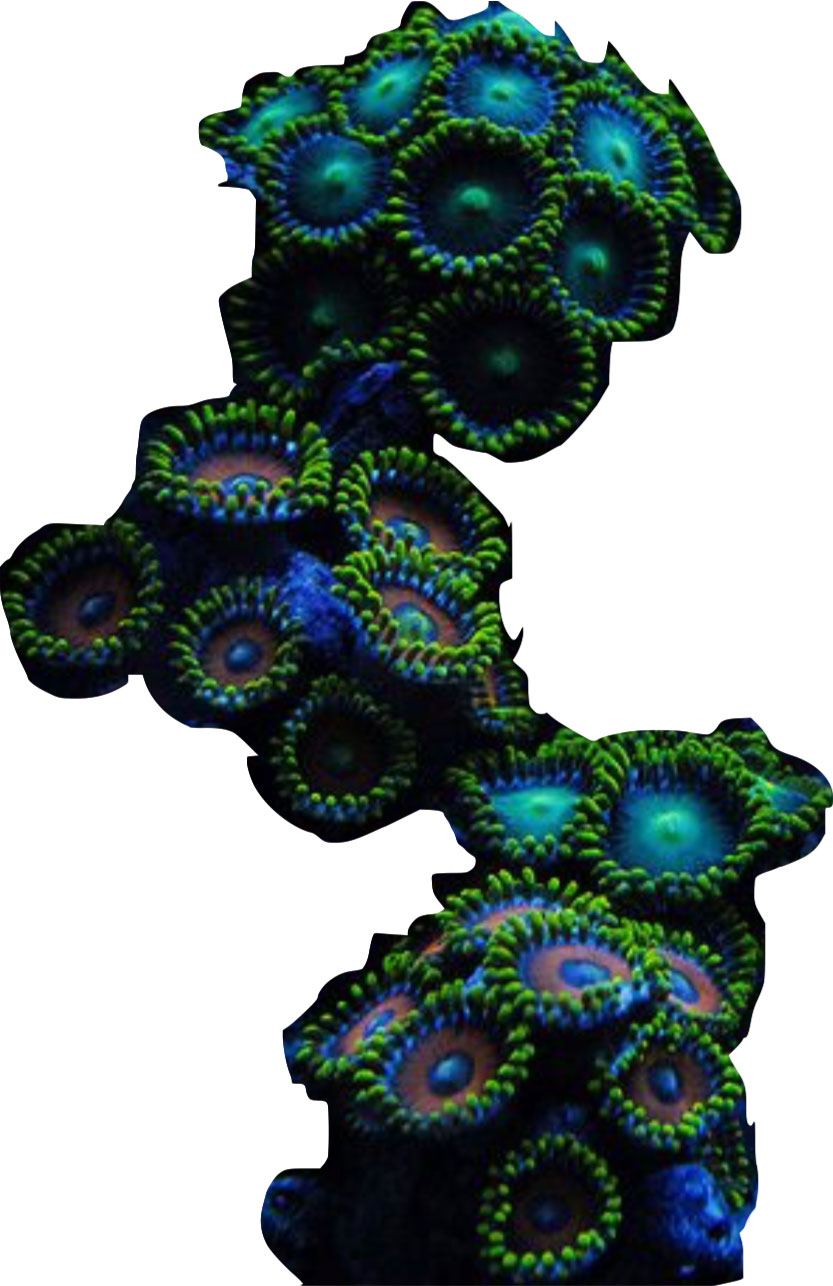From January–June 2022, the Crochet Coral Reef was exhibited at Museum Frieder Burda in a gallery-wide retrospective highlighting the scientific, mathematical, and environmental dimensions of this global interdisciplinary project. Along with a newly curated selection of Crochet Reefs by artists Christine Wertheim and Margaret Wertheim, the exhibition debuted the Baden-Baden Satellite Reef, a monumental archipelago of magnificent coral islands crafted with the people of Germany. This community-made artwork was a unique curatorial collaboration between the artists and 4,000 German reefers, making this the largest-ever Satellite Reef.
In May 2021, Museum Frieder Burda and the Wertheim sisters invited German crafters to contribute to the production of this reef. All the names of the 4,000+ participants were displayed on the gallery walls of the final exhibition and in the accompanying catalog. See here for launch of the project in Burda Style magazine. As a prompt to creativity, Christine designed a series of mock-up collages to inspire German reefers based in part on the discovery of an ancient “pinnacle reef” far out in the Pacific Ocean east of the Great Barrier Reef. Scroll down to see these designs along with suggestions for colors, shapes and scale.
Colors
We specifically want corals in the following colors: a whole range of purples, mauves, and lilacs, including deep rich tones and light pastel shades. Also dark blues, blue-greens, aqua, and off-white; plus highlights of bright-pink, bright-orange, bright-yellow, and some neon green and lime green, but not forest green. “Variegated” yarns are excellent and make for a more natural effect than solid colors. You can also think about edging your pieces in different colors, and creating pieces with many different layers or entwining of color.
Shapes
You can begin with the classic ruffled forms of “hyperbolic” crochet that mimic the frilling surfaces of many real coral species. (Download a PDF guide to hyperbolic crochet.) However, not all corals are hyperbolic, and we also want other shapes, including those of “staghorn corals” (branched structures), “tube-corals” (like anemones), and “plate coral” forms. Use your imaginations, go wild. We want to be surprised by your brilliance. This website contains a wealth of information and images spark your creativity, and we encourage you to explore it for ideas.
Yarns
Many different types of yarns are good for crocheting coral forms. We use wool, silk, cotton, soy-yarn, homespun, mercerized-cotton, acrylics, synthetics, and many other fibers. Fine wire works wonderfully, although it’s hard on the hands. We also encourage people to experiment with plastic threads of all varieties – many interesting plastic fibers are now available in craft-stores. You can also try cutting up plastic bags to make “plarn.” Like living reefs, any crochet reef is a diverse ecology, so the more disparate the range of materials the better.
Scale
We imagine this reef will be large, with a collection of individual coral mounds up to 2 meters high. To create the best effect we want pieces at many different scales: from several centimeters to as large as you like. Again, diversity is the key to aesthetic delight.
Participate
To participate in the Baden Baden Satellite Reef see Museum Frieder Burda’s project webpage for how to contribute, and where to send your finished pieces. All contributions will be included in the exhibition Wert und Wandel der Korallen (The Value and Transformation of Corals), Jan 29–June 26 2022,








